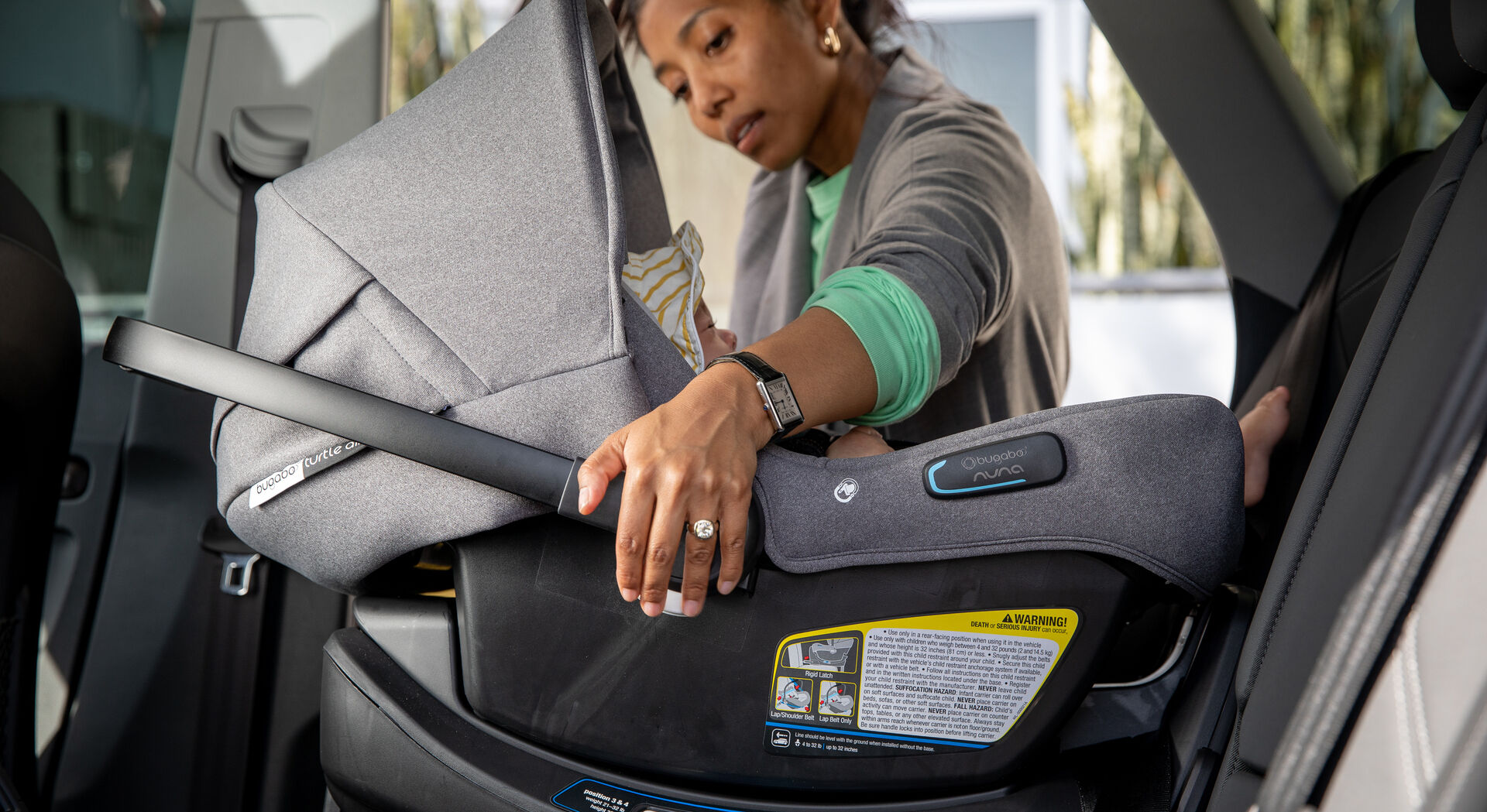
The ultimate guide to car seat safety
Understatement of the year: Going anywhere with an infant isn’t easy. But if you make sure their car seat is as secure as possible, you can at least rest easy knowing that your child will be protected whenever you’re on the road.
Decide where it goes in the backseat
There’s not a completely cut and dry answer. Really, you want the spot where you’ll get the most secure installation—and that’s ultimately dependent on your car and family. Here’s an example: The center seat has been heralded as a safe bubble zone away from many potential points of impact, so that should be the placement you consider first. But if your car has any sort of hump in the middle backseat or floor or a lack of lower anchors, then the middle may not be the best spot for the car seat. For instance, Bugaboo’s Turtle Air by Nuna infant car seat is designed with a stabilizing load leg, a sort of telescopic pole that rests on the car floor which minimizes any force of impact. If there’s a hump on the car’s floor, that would inhibit the installation of this car seat in the middle—so you’ll get a more secure fit with one of the side seats.
“If there’s a hump on the car’s floor, that would inhibit the installation of this car seat in the middle—so you’ll get a more secure fit with one of the side seats."
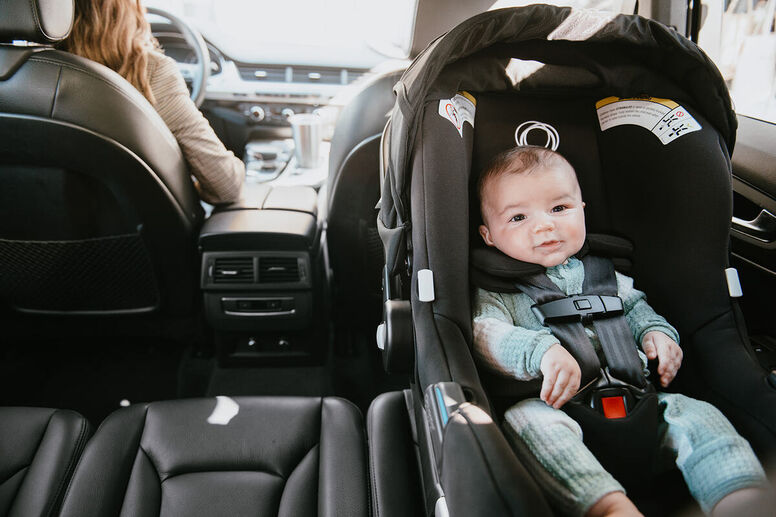
“In this scenario, if there’s a single child, I usually opt for the rear passenger side,” says Holly Choi, a certified first-aid instructor and child passenger safety technician. “If you have to parallel park on the street, then the parent can load the baby on the sidewalk away from traffic.” However, if the person who often sits in the front passenger seat is tall and needs plenty of legroom, then a rear-facing car seat may get pushed up against the back of the front seat, which isn’t ideal. In that case, switching to the rear driver side for the car seat may be the better option—or consider letting your tall family member sit in the back to keep the baby company instead. And if you’ve got multiple kids in car seats, you can certainly make it work. If both of the car seats are rear-facing, place the younger child in the middle seat, where they’ll be more protected, and the older child, who is physically stronger, behind the passenger seat. However, if one of the car seats you’re installing is rear-facing and the other is forward-facing, place the forward-facing car seat in the middle and the rear-facing one behind the passenger seat, since a forward-facing car seat has fewer safety features. If two car seats don’t fit side-by-side in your vehicle (they shouldn’t brace against one another), the second seat will likely need to be installed on the driver side.
Nail the install
First, read your car seat’s manual to figure out if you should use your car’s seat belt or LATCH (which stands for lower anchors and tethers for children), or both to connect the car seat base to the car. “A properly installed car seat should move less than one inch in any direction—check the belt path, the area where the car seat is physically attached to the car; don’t grab the carrier of the car seat as that will likely move,” advises Choi. The other thing that's so crucial, especially with infant car seats, is to confirm in the instruction manual the correct recline angle for your baby’s stage of development. The angle is there to ensure the child's airway is supported properly, because newborns do not have enough tone in their neck to keep their heads up and airways open if they are too upright. Your best line of defense is to have a certified child passenger safety technician double check your work (or ask them to install it for you if you are unsure). Find one near you at SafeKids.org.
“A properly installed car seat should move less than one inch in any direction."
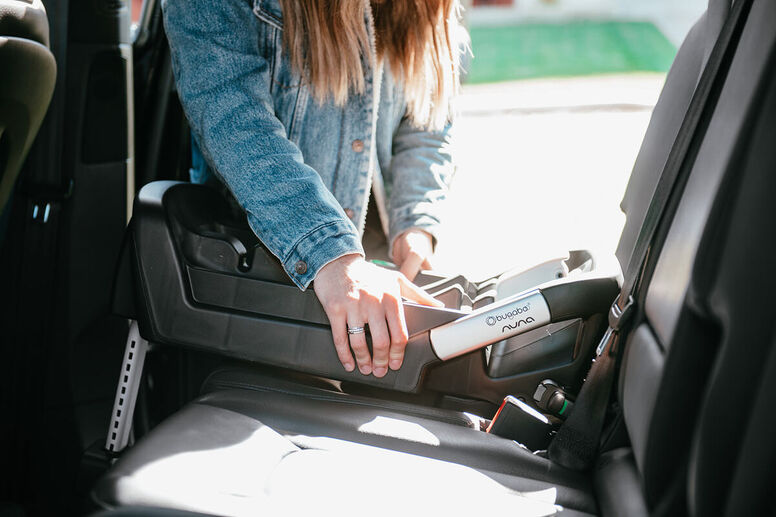
Do the pinch test
Once your child is strapped in, try to pinch a horizontal fold in the harness near the collarbone; if the harness is properly tightened, there shouldn’t be enough slack to do this. If you can grab something, tighten the harness while holding the pinch until the fabric falls out of your fingers. “Don’t forget to check the slack in the belt by the hip crease as well,” Choi says. Here’s how to tighten it: Standing in front of the child, grab the bottom of the harness with your hand just above the crotch buckle, while pushing down on the crotch buckle to pull the extra slack out of the sides. Then, pull the chest clip downward, and perform the pinch test again on the top straps, tightening until the fabric of the belt falls out of your fingers. Finally, slide the chest clip up in line with the armpits so that the harness can’t slip off your child’s shoulders.
“Try to pinch a horizontal fold in the harness near the collarbone; if the harness is properly tightened, there shouldn’t be enough slack to do this.”
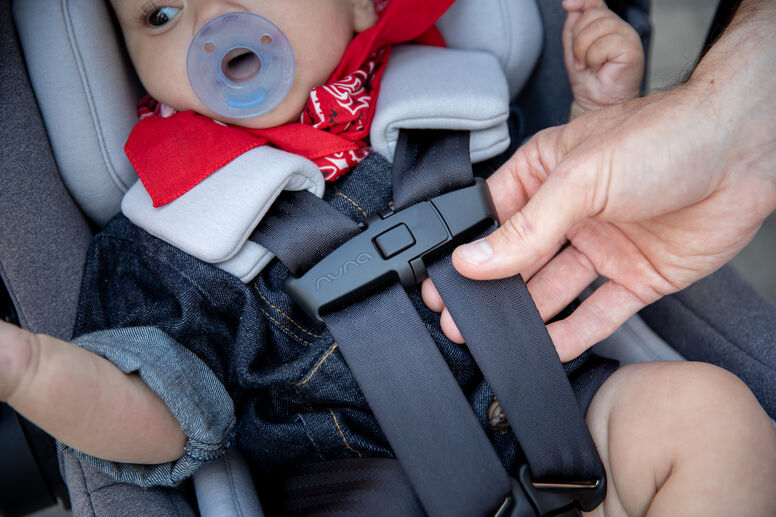
Ditch the coat
Once temperatures begin to drop, avoid having your child wear bulky outerwear in the car seat. It may seem like you’ve gotten the harness as tight as it can go. But “when we are in a car crash, we are dealing with g-forces, so every ounce of air will get squeezed out of the fabric, and in some cases, up to four inches of slack can be introduced in the harness,” Choi warns. Skip puffy jackets or any garment that distorts the shape of their body and instead opt for light layers that you would dress them in during spring months. Then bring along the coat for when you get out of the car. If you’re unsure if a jacket is safe to wear in the car seat or not, try the chalk test (and this is also a great visual to show skeptical grandparents). With your kid wearing the jacket, strap them into the car seat and tighten the straps as usual. Take a piece of chalk or tape, and mark off the adjustment tail where it meets the car seat. Now remove the child and their jacket and put them back into the seat and tighten the straps again, drawing or taping off another line. “If there’s more than a half inch in variance, that’s too much,” Choi says. “You need the harness tight to your child’s bones so it can do its job.”
“Skip puffy jackets or any garment that distorts the shape of their body and instead opt for light layers.”

Remain rear-facing as long as possible
There’s a good reason why. Most serious car crashes involve frontal collisions. And in a crash, everything in the vehicle will move towards the point of impact, including our bodies. A rear-facing car seat will cradle the baby's head, neck, and spine in a secure position, and the car seat itself will take the brunt of crash forces. “The longer we can keep a child in the rear-facing car seat while they are still developing, their bones are soft, and they have disproportionally larger heads compared to adults, the better we can protect them from any head, neck, or spine injury,” Choi says. With every doctor’s checkup your child goes to, make sure that their car seat, stroller, and anything else that they get transported in (carriers, wagons, etc.), is still suitable for their weight and height. But what if your kid’s legs are pushing up the backseat and they look uncomfortable? Should you switch them to front-facing then? “Children’s bodies are so much more flexible than ours, and things that look uncomfortable to us are not necessarily uncomfortable to them,” says Choi, who notes that there are significantly more leg injuries in forward-facing children. Plus, it actually may be comfier for your kid to have somewhere to rest their feet than to just let them dangle loosely.
“With every doctor’s checkup your child goes to, make sure that their car seat, stroller, and anything else that they get transported in, is still suitable for their weight and height.”
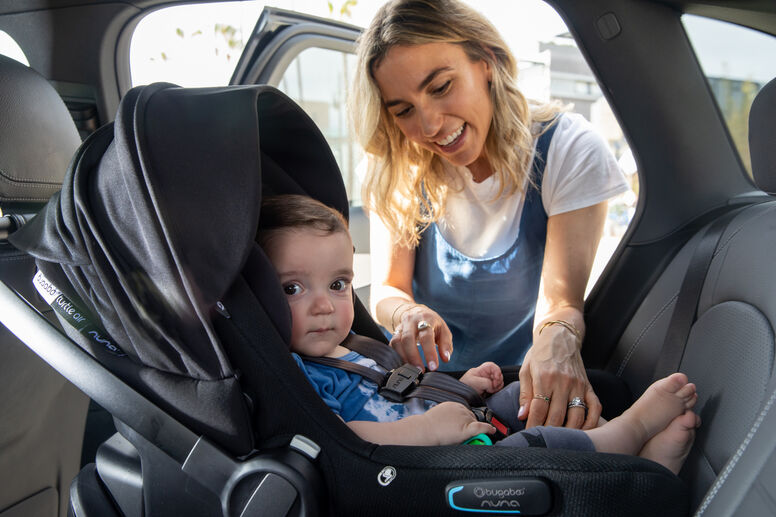
When it comes to car seats, it’s all about maximizing the most secure installation and the best fit possible. Once you get it done right, you can feel confident your baby will be protected.